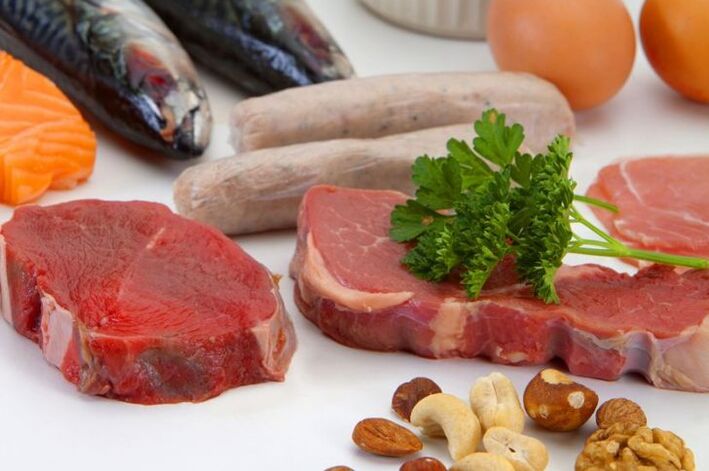
The ketogenic diet, which is now used by many people to lose weight, was actually developed to treat people with epilepsy. Because of this, many have managed to reduce the manifestations of this "terrible" disease in their children, and some have even forgotten its existence.
But because progress has not stopped, ketogenic diets are very rarely used for this purpose. But among lovers of slim, slender and pumped body, she became very popular.
However, it helps to dehydrate the body, get rid of extra pounds and at the same time maintain muscle mass, which is not successfully done by all diets. Additionally, a ketogenic diet works well during exercise, increasing its effectiveness.
Basic principles of diet
The ketogenic diet for weight loss is based on three basic concepts - protein, ketones, and ketosis. Protein - their high presence in food prevents the body from drying out muscles, instead taking energy from fat storage, thus reducing body fat, which leads to weight loss.
Ketones are a substitute for carbohydrates, which are our body’s energy and are often stored in storage. From a medical point of view, ketones are a product of fat breakdown. If this process is caused artificially (i. e. by eliminating the consumption of carbohydrates completely), then harmful substances will begin to accumulate in the body, which in itself is harmful.

Therefore, it is very important to understand that if you want to lose weight with a ketogenic diet, you must learn to remove these substances artificially from the body. And you can do this in several ways:
- drinking lots of fluids (toxins will only be removed from the body and excreted naturally);
- entering for sports (during exercise, the body sweats, and along with sweat toxins are released);
- 1-2 times a week to replenish glycogen storage, that is, eat carbohydrate foods.
Note that the ketogenic diet does not completely exclude carbohydrates from the diet, but reduces them to 30 grams per day. This amount is not sufficient to keep glycogen storage within a normal range. To do this, it is necessary to arrange a recovery day. You need to eat as follows - protein foods 5 days only, carbohydrates 2 days.
Diet menu
The ketogenic diet menu consists, as you already know, from protein foods. Ia:
- a fish;
- meat;
- eggs;
- cheese;
- cottage cheese;
- milk;
- kefir.
Vegetables are also allowed while maintaining this diet. But keep in mind that they contain carbohydrates, so you should eat too much of them. You can use the following menu (you can change something, but according to the instructions it must be almost the same).
Breakfast
As a rule, most of us eat scrambled eggs in the morning. And because eggs are on the list of allowed foods, eggs can be used to make omelets for breakfast. It is recommended to cook it with a pair of 2 eggs, without adding oil. You can eat an omelet in its pure form, or you can add 1 tomato and chopped vegetables into it.
So let's count carbohydrates. Eggs contain about 0. 7 grams, tomatoes and ingredients each contain 5 grams. Overall, it turned out that the breakfast contained only 11 grams of carbohydrates. Not bad.

Dinner
For lunch, you can cook the meat (100 grams) of your choice (except pork, as it is not a food product). Beef and veal should be preferred. The meat can be boiled, steamed or baked in the oven without oil. Boiled vegetable stew (100 gram portion) can serve as a side dish. You can also add a small piece of cheese (no more than 40 grams), a cucumber and a fresh green lettuce to your lunch.
We calculate the amount of carbohydrates. Steamed vegetable stew contains about 7 grams, cucumber - 4 grams. There are no carbohydrates in meat and cheese. The amount is only 11 grams.
Dinner
For dinner, instead of meat, you can eat a piece of fish (about 200 grams), add some green salad leaves, cucumbers and tomatoes into it. You can also eat a boiled egg. Dinner like that is light and will relieve the feeling of heaviness in the stomach.
Let's calculate the amount of carbs in this dinner. Fish - in it, as in meat, no carbohydrates, eggs about 0, 7 grams, a tomato 5 grams, fresh cucumber 4 grams, and lettuce 1, 3 grams. The amount is 12 grams.
And if you count the amount of carbs eaten, you get 34 grams. This is very small. If, during the diet, you feel drowsy or notice that you are starting to get tired quickly, you need to increase the amount of carbohydrates consumed about 2 times (up to 60 grams).
Since this diet provokes the production of artificial ketones, which can have a negative impact on health conditions, it is necessary to consult a doctor first. Otherwise, you risk getting a new hike or illness as a "bonus".













































